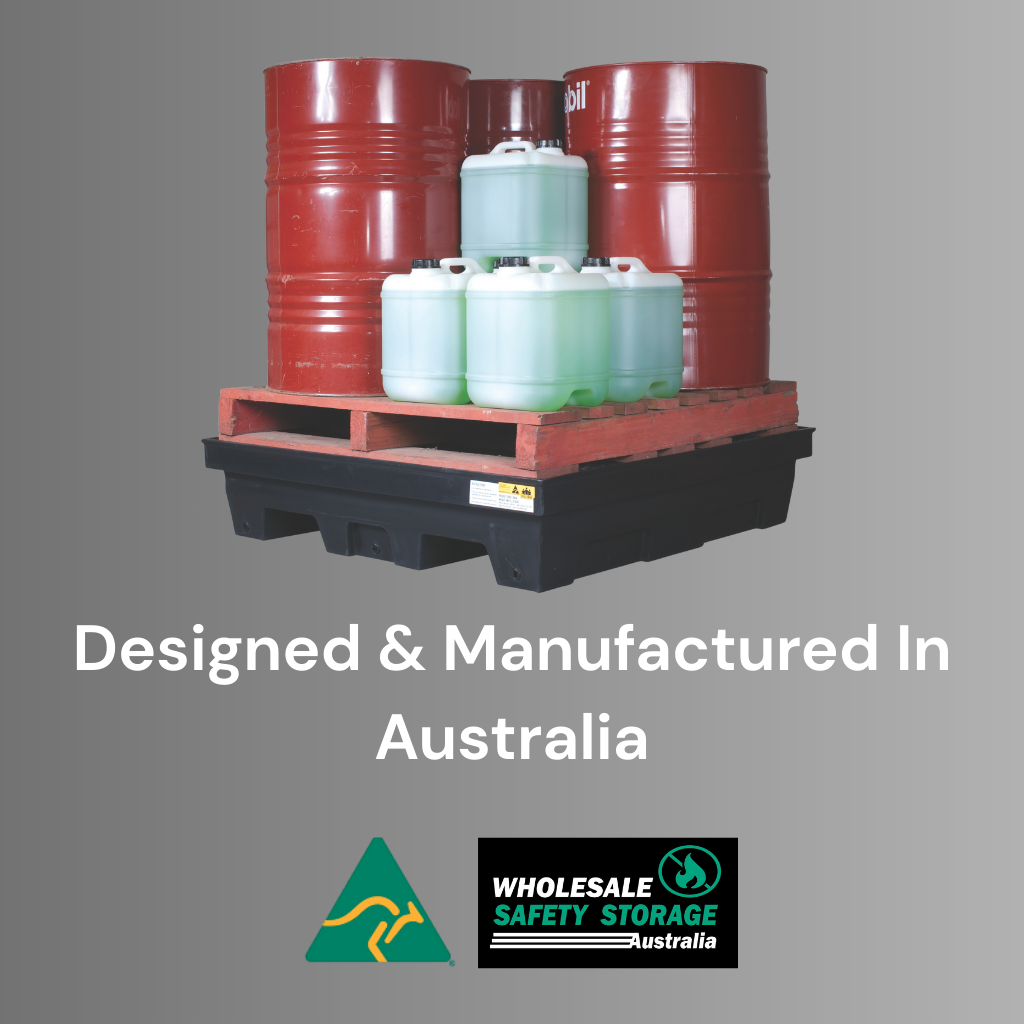Spill Pallet vs Dangerous Goods Cabinet Explained in Plain English
If you’re storing dangerous goods, one of the most common questions is whether you need a spill pallet (bund) or a dangerous goods cabinet. The answer depends on what you’re storing, how much, and where. In this article, we break down the difference in plain English so you know when to use each — and how they work together to keep your site compliant.
What each control is designed to do
Dangerous Goods Cabinets
- Meet Australian Standards (e.g., AS 1940 for flammables; AS 3780 for corrosives)
- Steel, double-walled, self-closing doors, vent provisions
- Integrated spill sump and segregation of incompatibles
- Ideal for indoor storage near points of use
Spill Pallets / Bunding
- Provide secondary containment to stop leaks reaching drains/soil
- Used for drums, IBCs, decanting areas, loading/unloading zones
- Outdoor storage requires rain management and isolation from stormwater
- Common bund capacity rule: ≥ 110–125% of the largest container (or set % of total)
Quick decision table
| Situation | Pick | Why |
|---|---|---|
| Up to a few shelves of flammable liquids (indoor) | AS 1940 cabinet | Fire-resistant enclosure, self-closing doors, integrated sump; aligns with audit expectations for Class 3. |
| Corrosives in small–medium indoor quantities | AS 3780 cabinet | Materials/linings and construction per the corrosives standard; segregation and sump included. |
| Multiple 200 L drums or bulk containers | Spill pallet / bund | Secondary containment sized to largest container or % of total; forklift-friendly options available. |
| Outdoor storage of fuels/chemicals | Bunded area or IBC pallet | Manage rainfall and stormwater; cabinets are generally indoor-only unless outdoor-rated. |
| Decanting/transfer area | Decanting stand + spill kit | Capture working spills near taps/hoses; meet EPA expectations at handling points. |
| Need both compliance & environmental protection | Cabinet + bunded floor | Cabinet handles fire/segregation; bund contains larger leaks across the area. |
Bund sizing (rules of thumb)
- Provide the greater of (a) 110–125% of the largest container, or (b) a set percentage of total volume (varies by jurisdiction and risk).
- Outdoors: protect from rain ingress and isolate from stormwater drains.
- Inspect regularly; pump out and dispose of contaminated liquid correctly.
Examples
- 80 L of thinners indoors → AS 1940 cabinet sized for growth + small tray at the decant bench.
- Four 200 L drums of oil (warehouse) → Spill pallet or bunded bay with capacity ≥ the largest drum.
- One 1000 L IBC outdoors → Bunded IBC pallet (≥ 1100–1250 L) + weather cover/drain isolation.
